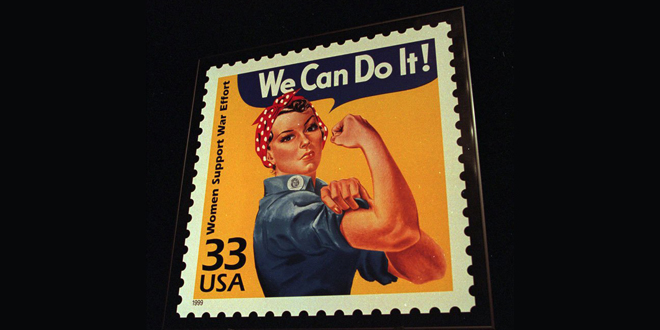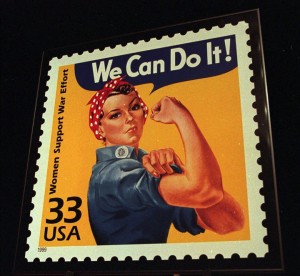In 1943, 20 years before I was born, Mary Doyle Keefe modeled for the Norman Rockwell painting, Rosie the Riveter, celebrating the significant contribution women made in the effort to fight Fascism and Nazism in Europe. Ms Keefe died this week at the age of 92.
This painting, and all the women who served in WWII, contributed to a centuries-long conversation women have been recycling in their struggle for equality. It’s still difficult for me to believe women won the right to vote in North America less than 100 years ago. New Zealand was technically the first place women could vote (1881). In Canada a limited number of women could vote in 1917 (open to all over 21 as of 1919) and in the USA the 19th Amendment, allowing women to vote, went into effect 1920.
There is much more to the story though. Women have been contributing equally (at least) to our shared history forever so it makes you wonder what was different about the 20th Century? How are women’s stories lost over time? Who are all the Kickass women from the past we don’t hear enough about? I think of Mary Wollstonecraft and Abigail Adams and Emily Howard Jennings.
Women, how do we ensure our voices are loud enough so our stories are never relegated again in human history? How do we build on women’s voices from the past while welcoming all voices and stories in the future?
Women are innately Kickass and our individual and collective stories prove it. We need to tell them and we need to hear them.
Rosie the Riveter was one snapshot—representing a powerful story. What will be different when you embrace your own? What will we, women, contribute to the human story when we hear and speak our authentic stories?


